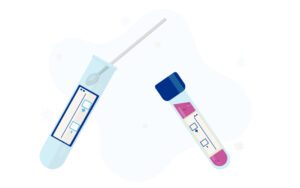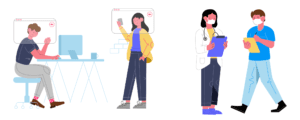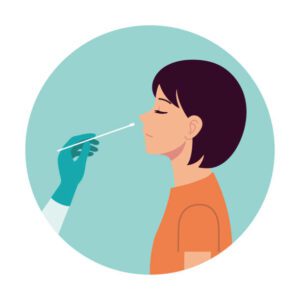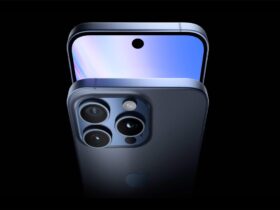COVID-19 antigen tests are quite popular, and it’s obvious why. They’re quick and easy to use, allowing you to keep the disease under control. However, the FDA has admitted that some quick antigen tests could be less responsive to the Omicron version, raising the possibility of a better approach.
Some testers on Twitter believe they’ve discovered it: the pharyngeal (aka throat) swab, an at-home testing procedure performed alone or in addition to nasal swabbing. Throat swabbing films from Public Health Ontario and the UK Health Security Agency illustrate how to correctly pick an oral sample, already standard practice in the UK and Canada.
They recommend using the accompanying test swab to sweep down the tonsils, attempting to avoid the tongue and teeth, before moving on to your usual nasal swab, spinning into each nostril for about 15 seconds. The samples would then be combined with a buffer solution made of salt and soap to break down cells, much like in US home-testing kits.

The solution mixture is placed on a test strip with color-changing antibody stripes when COVID-19 antigens are detected.
Jeffrey Dlott, MD, medical director of consumer health at Quest Diagnostics, said that as more nations use the double-swab approach, it may influence future FDA and CDC guidelines for people in the United States. However, it is crucial to note that the FDA has not yet approved this.
Nonetheless, some medical specialists in the United States advocate for throat swabbing. Michael Mina, MD, chief science officer of eMed, has been a vocal supporter of the testing method on Twitter. He had not responded to Health’s request for comment.
What is the Scientific Basis for Throat Swabbing?
At first, glance, swabbing your throat for a test sample seems logical. According to a study released by the University of Hong Kong website, Omicron begins in the lower respiratory system. It grows there 70 times quicker than the Delta variation and the original SARS-CoV-2 virus COVID-19 variants. According to molecular scientist Nathaniel Hafer, Ph.D. assistant professor at UMass Chan Medical School in Worcester, this implies that viral material may not reach your nose as rapidly as symptoms appear.
The changes in the COVID-19 Omicron variant may help it cling better in the throat or to saliva,explains epidemiologist Clare Rock, MD, an infectious disease specialist and associate professor of medicine at Johns Hopkins School of Medicine. Dr. Dlott advised that if you want to catch as much virus as possible the combination of a throat and nose swab may yield more precise results for at-home quick diagnostic tests.
However, additional research is required. Then again, lacking study, who knows if at-home throat swabbing may result in erroneous results, especially when home users are not following a conventional set of instructions?

In other tests that need saliva gathering, the requirements are usually extremely specific: you either drool into a tube, swirl out the saliva in your mouth before spitting into a cylinder, swab the inside of your cheek, or swab the back of your throat.
One may speculate that you could get conflicting outcomes depending on which part of the mouth you sample, according to Hafer of UMass, who leads study logistics for the school’s National Institutes of Health-sponsored Rapid Acceleration of Diagnostics (RADx) initiative, which supports COVID-19 testing innovative ideas.
Furthermore, eating or drinking within 30 minutes of taking a throat swab might add acidity into the test, interfering with its accuracy, according to Dr. Rock, who compares at-home testing to following a recipe. She added that If you don’t read the steps carefully, you can’t be sure you’re getting the right result, and It is critical to utilize home COVID testing exactly as advised.
Abbott, the maker of the popular at-home antigen test BinaxNow, told the New York Post that consumers must follow the instructions for usage if they want reliable test results.
Is it Possible Throat Swab and Nose Swab Screen Different Results?
There is a popular opinion that throat swabs are more effective in detecting covid-19 than nose swabs. Even there lacks the actual reason why this happens.
Scientists in South Africa discovered that PCR testing was better at identifying the Omicron variation when saliva samples were used rather than nose samples in one pre-print trial. The point is that peer review is the highest standard for medical evidence, and this study has not been subjected to that degree of examination. Dr. Rock says that, in general, we need more than one research to label something true.
Furthermore, the study included samples obtained by medical personnel and PCR testing, which may amplify the viral genetic material and allow detection long after one has stopped being infectious.This indicates that they behave differently from at-home tests, which already have a terrible reputation for being less sensitive as they are meant to detect antigens in highly infectious individuals.

PCR tests are very sensitive and pick up dead-virus pieces long after you’ve stopped being contagious, explains Jennifer Lighter, MD, an epidemiologist at NYU Langone Health and an associate professor of pediatric infectious disease at NYU School of Medicine. Antigen tests are not only positive when you’re infectious, but their responsiveness is very high when you have a few symptoms or have had close contact.
“What, after all, will happen if I swab my throat?”
Even though there are numerous indicators that you should use your at-home test as advised, many individuals will be disappointed by negative results after being exposed to COVID-19 or showing symptoms. They would want to try another method before committing to a PCR test. So, what could go wrong?
Because it’s difficult to obtain a good glance of the back of your throat when going all up in there, doing a throat swab on oneself might be more difficult than a nasal swab.What happens if swabs are used inaccurately?
The FDA warned that they might cause damage to the patient in its statement. At the very least, you’d uncomfortably activate a gag reflex—not helpful if you’re already experiencing nausea and vomiting, both of which may be caused by COVID-19.
Dr. Dlott warns that testing the throat and nasal canal with the same sample can be unpleasant and, if performed in the wrong order, can result in additional ailments.It might be one of the reasons why the FDA is so adamant about allowing just nose swabs for home-testers.
The danger of diminishing your test’s accuracy is similar if not greater: Hafer adds that deviating from the recommendations, there’s a probability that it won’t run as intended. A false negative might give you a false feeling of security, leading you to unwittingly transfer the infection to others. However, you may receive a false positive, which can lead to undue stress and isolation.
“At the top of my social media feeds, people are putting tap water on tests and getting positive lines,” Hafer says. “That doesn’t mean there’s COVID in the water. It means there are lots of ways to break the tests.”
One such method may be the use of saliva from a throat swab.
According to Dr. Rock, the pH of the buffer in FDA-approved at-home nose swab COVID-19 tests is specially intended for nasal swab specimens. Adding saliva to the mix might corrupt your sample and cause test findings to be inaccurate.
Should you take the sample from your throat for an at-home antigen test? The specialists who talked with Health all agreed that the answer is no, at least for now.














Leave a Reply